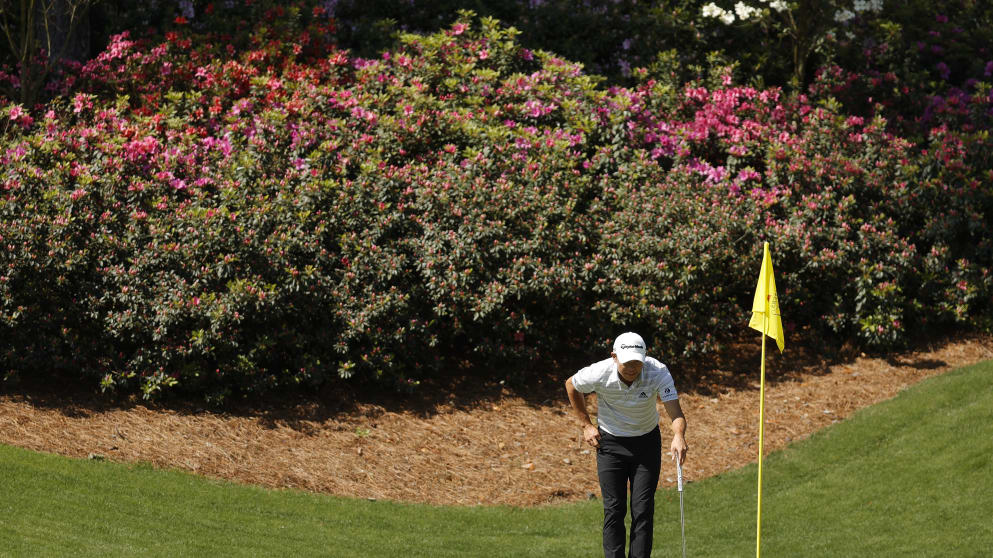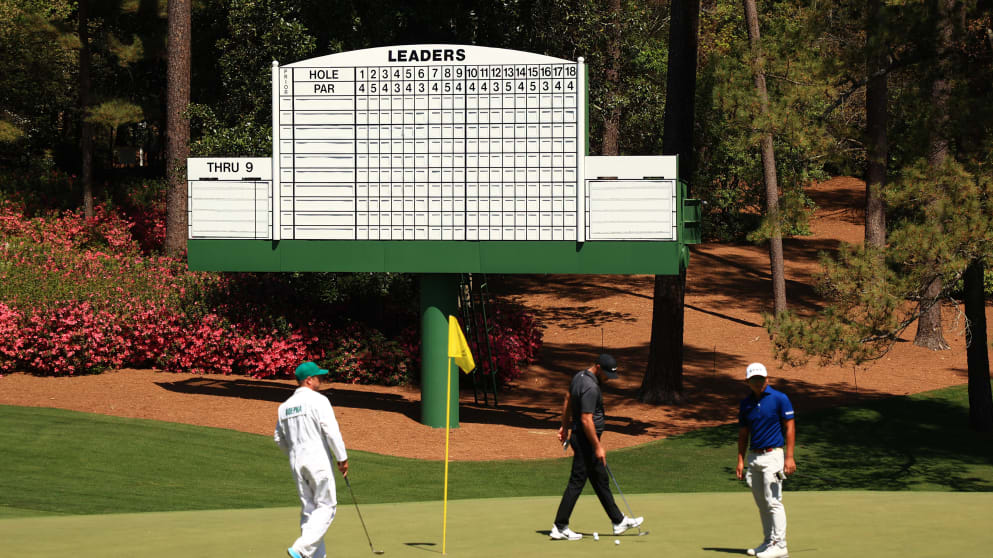Just five months ago, Dustin Johnson claimed his first green jacket around an uncharacteristically autumnal Augusta National.
But Spring has returned to Georgia, and the iconic azaleas and famous green hues around the course are set once again to welcome in April with the first Major of the year.
And its return, according to the players, promises a firmer and faster test much more familiar with years gone by than during Johnson’s record-breaking victory at the first November Masters.

Former champion Jordan Spieth, who arrives in Augusta following a victory on the PGA Tour on Sunday, says he – and his fellow professionals – expect to see much tougher scoring conditions than in November.
He said: “If the membership here and those who are setting up the golf course get the weather they want to get, they like to see tournaments like 2014, 2016, a little bit '17, where it's potentially less than 10‑under par is a winning score, where it requires a lot more kind of course knowledge where you leave the ball and you have to hit an even more precise shot to get it where you want it to go.
“I think the firmer the better, the way this golf course plays. I've heard that it is firmer and the grass around the greens is tighter, and it's in just impeccable shape for being the Sunday before from the guys I talked to yesterday.”

Fellow former champion Adam Scott compared the conditions to 2007, and said there will be no false sense of security around the conditions this week.
“You don't often see it like this on a Monday, but in my memory, 2007 had the firmest greens I think I've played here in my years,” Scott said.
“Zach won. But in the practice round I actually remember being on the 16th green with Greg Norman and poured some water on the slope and the water just trickled all the way across and off the green. It never got absorbed. That stood out for me. I didn't do that today, but it looks kind of similar
“The greens are fiery, almost all of them. Usually in the past when it's been good weather, you're kind of lulled into a false sense of security Monday, Tuesday, Wednesday around here and then they cut your legs out from under you on Thursday and you're scared every chip shot and all of a sudden downhill putts are running to the edge of the green and stuff like that. That's what was happening out there. Looked like it was at a really tournament length, the grass around the greens and the firmness and the speed of the greens had that brown tinge on it. If that's a sign of things to come, we've got to buckle up for this week.”
Cutting the pins at Augusta ✂️#TheMasters pic.twitter.com/2OGdSLAcZh
— The European Tour (@EuropeanTour) April 6, 2021
Lee Westwood, who is making his 20th appearance at the Masters this week, thinks that he expects the conditions of this year's course will lend themselves to more experienced players.
"In November when we played, the golf course is nothing like it normally is. You could actually miss it in spots you were terrified about when you were making your plan, and you could be aggressive to certain flags. It wasn't, as everybody would sort of say, a true Masters.
"This week it's back to how the golf course should play, fast and firm, and this is how it is at its toughest. You'll see, I think, people who have got a lot of experience around here coming to the top of the leaderboard again."

And while Spieth, Scott and Westwood have experience of different conditions around Augusta National, Collin Morikawa, Abraham Ancer and C.T Pan all made their debut in November – and will be playing the tournament in April for the first time.
For PGA Champion Collin Morikawa, the key difference is going to be between the types of shots they could hit around a softer Augusta than they can this week.
“It's still the same golf course, but it's going to play a lot different with certain shots,” said Morikawa.
“I can't miss it in certain areas like we did last year. You're not going to see certain balls stop. I remember I think someone that I played with in the Sunday final round on 7 stopped their ball in the middle of that slope, like the middle of the green on the right. I'm like, that's not possible. It's never possible. I've never seen it. And that's why you just kind of come out here on a Monday, and by Wednesday you just figure out what I need to do. But line-wise, I think, off the tees, everything, they are pretty similar.”

Both Pan and Ancer, who finished in a tie for seventh and 13th respectively on their debuts, agreed with Morikawa that the differences are going to be in the greens.
“I mean, I want to say the distances are about the same, but the way you're hitting into the green, the way the ball reacts after hitting a green, just totally different. So we do have to take that into account and think about where we land and give us more room.
“But I'm sure everybody is saying this: The greens are faster and firmer, which will make it tougher to play, and which means your landing zone is much smaller. You don't have much room to miss. It's more demanding for sure.”

Ancer added that he expected the move was to limit the low scores, but is looking forward to the challenge.
“The golf course is obviously different,” said Ancer. “It's way, way firmer. The greens right now, being a Monday, are very fast and very, very firm, which is going to be a really good challenge. It's nice to see the course like this. I'm sure the Augusta National crew didn't like the low scores, so it shows right away where it's going to be this week, which is going to be fun.
So what does all of that mean? For two-time Masters champion Jose Maria Olazabal, it means Augusta looks as good as ever.
“It's true that in November we had a lot of rain from Wednesday on, and this year, well, back to spring, and the golf course is playing firm and fast, and I think this is more of the usual Masters,” he said.
“I think, if the weather stays like this, we're going to see Augusta as good as ever.”






